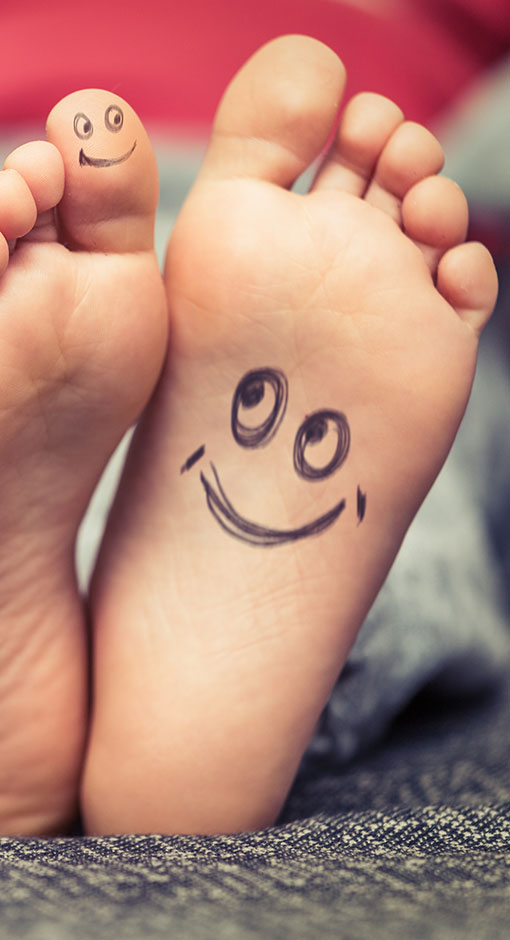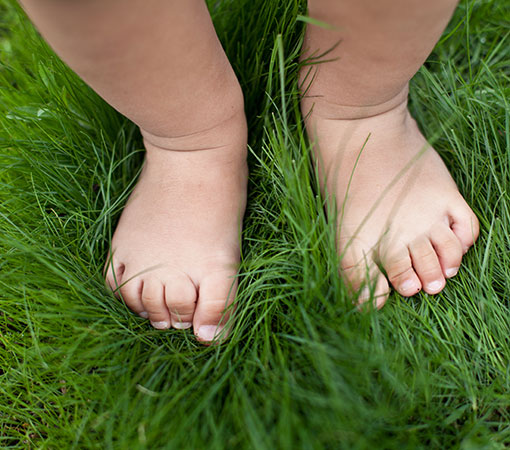How To Care For Your Childrens Feet
Caring for the most important feet in your life
You make sure your child has warm clothes and enough to eat, bring them in for wellness visits, prepare them for school, and provide opportunities to play and make friends, but what do you do for childrens feet? We want you to understand some of the most common foot problems for kids, so you can be on the lookout and get treatment when it is needed.
Is It Growing Pains or Something Worse?
One of the major causes of heel pain in kids has to do with growth, but passing it off as growing pains will not help. If your child is between the ages of 9 and 11 and active in sports, he or she is a prime candidate for calcaneal epiphysitis, or Severs disease.
During growth spurts, the bone, muscles, and tendons can grow at different rates. Tight calf muscles and Achilles tendons can pull on the bone, aggravating the growth plate in the heel that has not hardened yet, and causing pain and inflammation that becomes worse with activity.
Your child doesnt have to live with pain. We can offer remedies such as shoe inserts, stretches, and medications if needed to relieve the pain.

Should You Worry about Intoeing?
It is natural to wonder if your childs pigeon-toed gait pattern is a problem. Your child will likely outgrow intoeing as the bones, tendons and muscles develop and become stronger. It is important, however, to consult a foot specialist to monitor the process and be on the alert for any abnormalities that may need correction later.
Do You Need to Treat Pediatric Flat Feet?
Most childrens feet look flat when they are little because the arch doesnt fully develop until age 5 or 6. In some cases, it never develops due to inherited foot characteristics. Good pediatric foot care involves keeping an eye on this issue, but unless your child has pain or difficulty walking or jumping, no treatment is needed for flat feet. If your child complains of heel pain, better shoes or custom orthotics may be all they need for relief.
What to Do about Warts?
Kids more often go barefoot and are more likely to pick up the virus that causes warts. Plantar warts on the soles can be painful because of the pressure on them when kids walk. Warts often resolve on their own, but it may take a long time. If they are bothering your child, we can treat them using a wart removal preparation at 4 to 6 periodic visits.

Dealing with Ingrown Toenails on your kids feet?
Kids feet can grow quickly, and tight shoes that pinch the toes are a major reason kids get ingrown toenails. You can help by checking what you put on their feet. Socks and shoes should be roomy and not cramp the toes.
Also, pay attention to how you trim their nails. If you cut them too short or round off the corners, your child may be more prone to ingrown nails. Watch for any signs of redness, and come in as soon as possible if you see any pus or red streaksindicating an infection has set in.
Bunions
Although more common in women, bunions can affect children as well. This deformity of the big toe can happen as a result of inherited foot structure and walking gait, and it is made worse by ill-fitting shoes. If you notice redness or a bump by your childs big toe, come in for an exam. The problem will worsen without treatment, so catch it early for the best results.
For more information about caring for childrens feet, you can order our book Childrens Foot Conditions. We want to help put your mind at rest about common issues that are not a problem and let you know when it is time to seek the help of a foot specialist. For suburb pediatric foot care, call Ottawa Foot Clinic in Ontario at (613) 595-9700 to set up an appointment at our Deakin Street office. You can also request one online using our contact info page.

